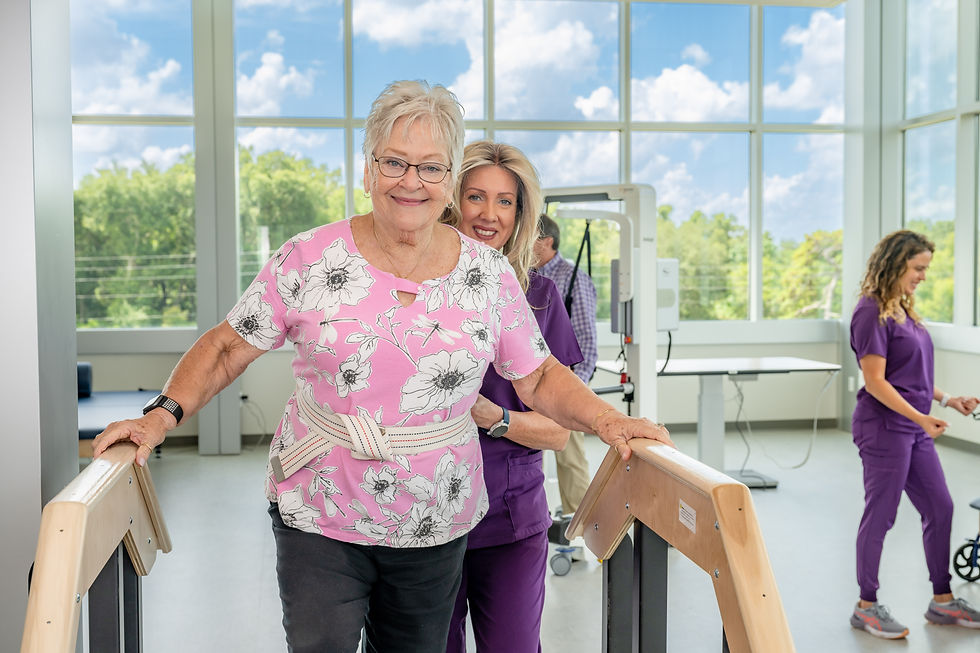Enhancing Patient Safety with Falls Prevention Programs
- Florida Rehabilitation Hospital
- Aug 9, 2024
- 2 min read
Updated: Aug 13, 2024

Inpatient rehabilitation hospitals (also known as inpatient rehabilitation facilities or IRFs) are where thousands of people go each year to recover from disabling illnesses or injuries, such as traumatic brain injuries, spinal cord injuries, cancer, limb loss, stroke, complex trauma, or joint replacement. Although IRFs are where people go to improve their function, IRFs must have a solid fall assessment, prevention, and education program in place. According to the Centers for Medicare and Medicaid Services (CMS), 0.2% of IRF patients experience one or more falls with a significant injury during their IRF stay. This can lead to an extended hospital stay, higher medical costs, permanent disability, or death. Preventing falls during this critical time of therapy and recovery is crucial in all inpatient rehab hospitals.
Causes of Falls in IRFs
Falls in inpatient rehab hospitals can have many causes. Patients often have impaired mobility and physical weakness, increasing their chances of falling. Medication side effects, such as dizziness or drowsiness, may cause people to be more likely to fall. Additionally, being in an unfamiliar setting may increase the risk.
Important Elements of a Falls Prevention Program
Fall prevention programs have several essential elements.
Fall risk assessments – Upon admission, patients should be assessed for their fall risk.
Staff education and training – All staff should understand how approach care for each patient based on their fall risk.
Standardized interventions – To reduce the risk of falls, standardized interventions should be implemented for each patient based on their fall risk.
Patient and family education – Patients and their families should understand the do’s and don’ts of avoiding a fall while in the IRF, such as using a mobility aid, assistance or asking for assistance.
Post-fall management – If a fall does happen, it’s important to have a set of procedures that include an exam, monitoring, and contacting a physician if needed.
Falls committee – An interdisciplinary team, which includes nurses, therapists, physicians, pharmacists and others, should routinely review the fall prevention protocols and serve as a resource for teams treating high fall-risk patients.
Preventing Falls at Florida Rehabilitation Hospital
When a patient is admitted to our hospital, we have a set of procedures we follow to help prevent falls. We conduct a fall assessment for every patient and implement precautions based on their needs.

We have a standard set of procedures for every patient, which includes orienting them to the room, ensuring they understand how to use the call light, and keeping personal items within reach. For those with higher fall risk, we add additional procedures, such as having staff remain with patients while they’re in the bathroom or adding a bed alarm or similar technologies to their room.
Additionally, we use advanced technology to help keep patients safe during their therapy. OmniStand® is a dynamic balance system that helps therapists work with individual patients to provide effective, progressive balance and gait training. This allows therapists to challenge patients while keeping them safely supported.
Click here for more information on our efforts to ensure patient safety and quality of care.









